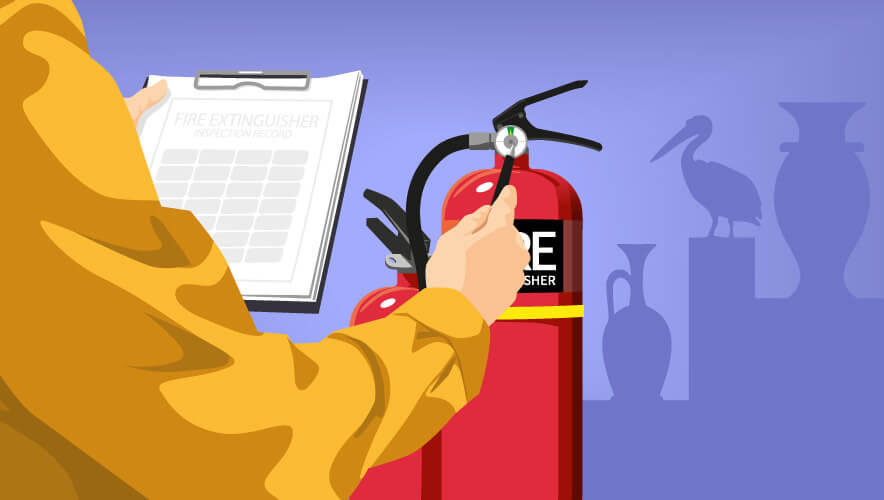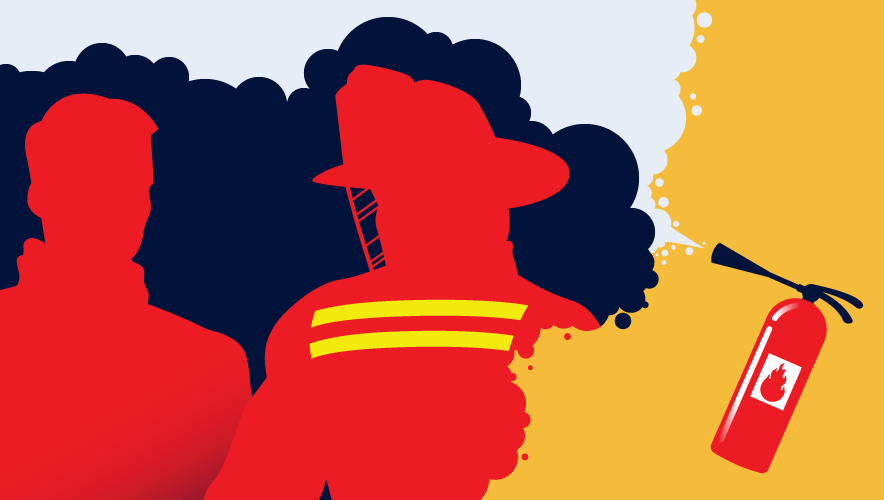Improving Emergency Response with Better Dispatch Instructions
Are you familiar with the phrase “be prepared”? I learned it on my journey to becoming an Eagle Scout. Scouting was the start of my enterprise security risk management (ESRM) voyage by making me aware of consequences firsthand. I will never forget my first winter backpacking experience; I was 11, there was deep snow, ice caves, steep trails deep in the woods, two nights spent in an open lean-to, no proper clothing (everything was cotton—wet cold cotton). My second hike went much better. The missing link was better pre-event information and communications.
ESRM teaches us to be prepared for adversity in ways which often include using alarm detection and notification. This article focuses on the notification portion of the process and how notification may be taken to the next level in saving lives, property, and preserving continuity of operations.
When alarms occur in response to incidents such as fire, they notify locally via indicating appliances—horns, strobes, or voice message speakers—and by local visual displays using “point descriptors.” Point or zone descriptors are the text displayed directly by the alarm system when a detector goes into alarm or trouble, such as “Fire Alarm Third Floor Smoke Detector.” With addressable fire alarm system communications, caution should be exercised when using the word “zone” because it frequently refers to a programming feature—not a device.
The instructions were often generic, despite the clear need for emergency responders to have as much information as possible.
Alarms can also remotely signal to central monitoring stations. These can be proprietary (think of a campus security department’s command center) or professional third-party central station monitoring company centers. These centers are where operators using prepared dispatch instructions notify and dispatch police, fire, and medical responders based on the computer displayed alarms received.
As an emergency responder in the U.S. Navy and in private industry, I have participated in thousands of alarm dispatches. Most of those alarm dispatch instructions were limited to approximately 50 characters by the central station operator dispatch software. The instructions were often generic, despite the clear need for emergency responders to have as much information as possible about the incident they’re responding to—especially when flammable substances and other special hazards are present. Sadly, the central station dispatch instructions limitations have remained the same for many decades despite exponential technological advances in other areas.
To improve dispatch communications, planners should be given a list of descriptors to use that are in concert with your organization’s ESRM response instructions and site signage. When special hazards are present, consider including responders hazard guidebook lookup nomenclature. An example of a special hazard could be as simple as propane or gasoline in a home, to the vast array of chemicals used throughout the industrial world. Water treatment plants are a good example where chlorine (liquid and gas) or sodium hypochlorite are stored in large quantities. In medical facilities, radiation in many forms can be an exposure hazard. Advanced preparation matters and it can be improved with better notification, especially if the emergency response requires entry into one of those hazardous areas.
Two examples of widely used emergency responder guidebooks in the United States are the U.S. Department of Transportation’s The Emergency Response Guidebook (ERG) and the Centers for Disease Control and Prevention NIOSH Pocket Guide to Chemical Hazards. These two guidebooks are carried in most fire engines and trucks. If you look up sodium hypochlorite in the ERG – ID 1364 or Pocket Guide Number 135, it is listed as a very serious health hazard with other critical responder warnings. Simply saying in dispatch instructions “ERG ID 1364 - # 135” is less than 20 characters provides responders with the information they need to achieve a better outcome.
Emergency responders, once on site, will be viewing the local alarm screen’s displayed point descriptors—our second place for concern. Start by understanding each alarm point (or zone) in the context of your ESRM program. Are your industrial alarms displayed on a supervisory control and data acquisition (SCADA) system, locally displayed, central station monitored, or announced in other ways?
SCADA systems are another place where the displayed information, when carefully crafted, can make a great difference. If the alarm originates from an area of confined space or other hazard, informing the responders to follow an explicit protocol referenced in a supporting document, such as an Emergency Response Manual, may speed recovery phase.
Fire alarm systems and intrusion detection systems typically have very limited display characters available, which can make it challenging to optimize the information being conveyed. It is ideal when the point descriptors and central station dispatch instructions are the same. Consider providing a floor plan view map labeled with those same point indications.
As technology evolves, there are also applications that will communicate alarms via text, email, and through private chat networks. Look for these to obtain great options for instructional information.
Signage in concert with optimized dispatch instructions can better speed a responder unfamiliar with the site to the emergency. Signage is a great way to help occupants be prepared by conveying knowledge before emergencies, and as an all-important reminder during panic.
An interesting new twist is now required for all U.S. jurisdictions that have adopted the National Fire Protection Association (NFPA) 72 2019 National Fire Alarm and Signaling code Section 26.4.1.4. Under the code, central station dispatch operators must now read a long supplemental message when providing dispatch instructions for a carbon monoxide alarm.
From NFPA 72 2019 26.4.1.4:
- Once contacted, inform the subscriber to take one of the actions in (a) or (b):
a. Where the subscriber has a carbon monoxide emergency response plan, implement the plan.
b. Where the subscriber has no carbon monoxide emergency response plan:
i. Immediately move to fresh air, either outdoors or by an open door or window.
ii. Verify that all occupants are accounted for.
iii. Do not re-enter the premises or move away from an open door or window until the emergency service responders have arrived, the premises have been aired out, and the alarm returns to its normal condition.
This message alone is about 480 characters, and it still needs at minimum location information. Additionally, this seemingly implies other special hazards should be considered in this vein for special messages when additional information contributes to life safety. Ultimately, new requirements like this one may help in garnering more available characters for all notifications instructions.
Getting all this right requires a team of client, alarm system integrator, and emergency responder representatives so that all key parties are on the same page. The point is to do your best to convey the information that gets you the best response, so you’re better prepared.
Felix Giannini, CPP, FPE, is a systems design and engineering practitioner. He is a long time ASIS International member currently chairing the Southern CT Chapter. Find him on ASIS Connects. A champion of ASIS ESRM, he strives to find ways to make a positive difference in our profession.












